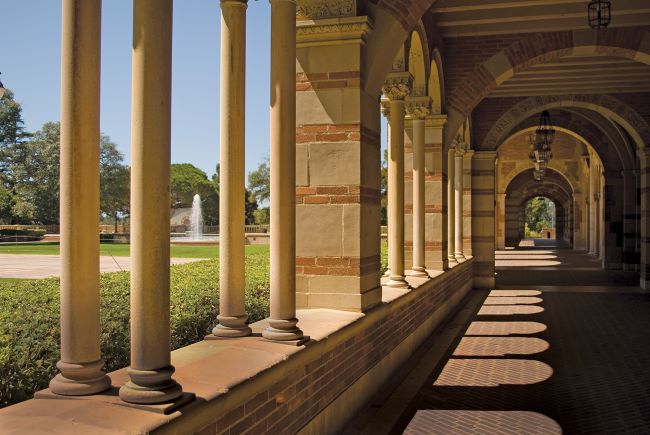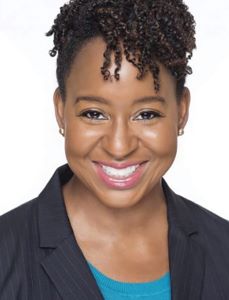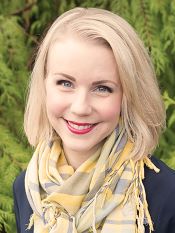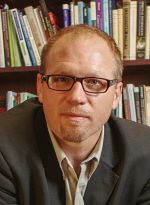
Nyasha Junior vividly recalls the firestorm that erupted after a comment she posted on Twitter was aired on a political talk show that boasts a primetime audience of 3 million viewers. Neither she nor the university where she’s a biblical scholar knew how to respond to the hate mail and offensive phone calls that she began receiving. The experience reinforced her decision never to use social media as an instructional tool in her classroom. She will continue to tweet messages in her role as a “public intellectual,” but she will not expose students to an online environment that she describes as often “toxic.”
Some professors agree with her. Others consider the use of social media in the classroom as more of a mixed blessing; they acknowledge the risks, but also see the benefits.
In Trust recently asked three faculty members about using social media as an instructional tool at seminaries, schools of theology, and departments of religion. They were interviewed separately, and we compiled their responses into one article.
Are there advantages to using social media instead of a school’s private and secure learning management system (LMS)?
Leah Payne: For delivering content, I’m a big fan of using generally accepted technologies because they’re already part of students’ everyday lives. In some cases, a traditional educational platform [like an LMS] can be a barrier if students first have to learn the platform’s technology. To lower that barrier, my institution uses Facebook, and I use YouTube and Google Docs. As a church historian, I want to reduce the time students have to spend learning how to create a discussion post or access a resource I have posted on the LMS.
For example, my colleague Brian Doak and I created Weird Religion, a podcast for the discussion of religion and popular culture. We’re able to deliver a lot of content and interact with students in a low key, relaxing way that’s familiar to them. We provide analysis, but we also share jokes and a bit about our personal lives. I value it as an opportunity to help students consider an idea about church history in a format that they already use. It can become part of their playlist; it’s something they can do whil they’re folding laundry or on a long drive.
What about the possible risks?
Nyasha Junior: I don’t use social media in my classrooms, and I don’t require my students to use public platforms as part of their assignments. The social media landscape is really toxic these days. To have students possibly exposed to trolls and online abuse would require additional monitoring. I don’t believe in the idea that “we should all be out there, we should all be public.” I push against that message. That said, I use Twitter extensively as part of my work as a biblical scholar. I’ve built up a large following — for an academic.
Leah Payne: There are lots of classes where I could see value in putting yourself “out there” publicly, but I don’t ask that of my students. I teach courses on the development of Christianity in the United States, and I want students to feel free to experiement and have some of their preconceived ideas disrupted. If they’re thinking that they have a public audience, they may not be as frank or as free with their thoughts. Many of my students have public audiences already, but as beginners in the history of Christianity in America, I think it’s important for students to have a private sphere for their work. I hope that what they learn in my class benefits the public work that they’ll do from their specific platform.
Thomas Jay Oord: If your program is fairly conservative and you’re challenging students to think in ways that are perceived as more progressive, they — and your program — are bound to get a certain amount of criticism. Is that a risk you’re willing to take for the sake of education? Personally, I am willing to take that risk. I think that asking students to publish something on a blog, or submit a book review to Amazon, or write a piece for a church’s website is a nice way to get them to engage in public theology and to put into action the ideas we’re teaching in class.
My typical formula for a class is this: Students not only read selected materials but also watch particular videos and make posts. They have to engage in public forums.
How do students respond to the expectation that they engage in these public forums?
Thomas Jay Oord: It varies. Some students say, “I’m already doing this.” Others are cautious, some are leery. So we talk about a way to produce something that fits their comfort level.
When social media is used judiciously by academics outside of the classroom, can it stimulate discussion and bring religious discourse into the mainstream?
Leah Payne: Yes. For one thing, as a teacher I follow a lot of excellent scholars on social media and I learn from their posts and analysis, which makes its way into my classrooms. I’ve read doom-and-gloom essays about how our national attention span is short and we’re not communicating with one another anymore. To me, the success of a format like podcasting illustrates that long-form thought is still alive and well. Weird Religion was created first as a teaching experiment, but it’s transcended that. We have a digital reach of between 5,000 and 7,000 people a week, and we try to use that platform to help people who might not otherwise be interested in religious studies learn about religion and public life. In each episode, we use a popular culture item and link it to history and biblical studies. It’s a casual way to connect the dots between scholarly work and popular conversations.
Nyasha Junior: It’s a way to disseminate information and reach people who might not ordinarily be interested in religion. For example, I recently live-tweeted and sent photos from the Society of Biblical Literature international meeting in Rome. I relayed what was happening in the room, who was present, and how it felt to be there. It was a way of sharing information and broadening the conversation. I realize that some academics and academic conferences have anxiety about live-tweeting. If they’re giving a lecture to an audience of 30 people, they feel they have control, but if someone in the room is live-tweeting to the world, they lose that control. They fear an idea could be stolen and words could be misquoted. I’m not aware of those things happening, but if speakers say ‘Please don’t tweet,’ of course I respect their wishes.
Social media also helps me share the spotlight with other scholars and bring attention to the work particularly of Black religion scholars. So for me, it’s just part of what I do. I accept the risk and I’m willing to continue doing it, but it’s not something I recommend all people do.
Should campus administrators and trustees have protocols that address the use of social media by professors, both in and out of the classroom?
Nyasha Junior: Yes. I think institutions need to be out ahead of this and not simply respond when there is an incident. And, trust me, at some point there will be an incident. When one of my tweets ended up on a cable talk show and I received hate mail for two weeks, I was told by my university to file a report with campus police. There was no counseling support or legal resources available; no one helped me erase my personal information from the web or deal with the phone calls. I was on my own. Going forward, schools need clear guidelines and policies that say, ‘We’re going to protect you and stand by you when they come after you.’ And it really is ‘when’ because it’s going to happen at some point and people shouldn’t have to scramble to figure out what to do.
Who's who
 Nyasha Junior is associate professor of religion at Temple University.
Nyasha Junior is associate professor of religion at Temple University.
 Leah Payne is assistant professor of theological studies at George Fox University and Portland Seminary.
Leah Payne is assistant professor of theological studies at George Fox University and Portland Seminary.
 Thomas Jay Oord is director of the Center for Open and Relational Theology. He taught for 18 years a Northwest Nazarene University.
Thomas Jay Oord is director of the Center for Open and Relational Theology. He taught for 18 years a Northwest Nazarene University.